A Guide to the Beautiful Bridges of England

Tucked in the heart of Bath, Pulteney Bridge stands out as one of the city’s best-loved sights. In fact, many people think that this is one of the world’s most beautiful bridges (apt, as Bath is often called one of the world’s most beautiful cities!)
The Georgian arches lie over a bustling row of tiny independent shops, who likely have the best views from their windows, of any storefronts on earth!
The idea of shops built onto bridges came straight from Florence’s Ponte Vecchio. That bridge had stood for centuries and was known all over Europe.
Who Commissioned the Building of Pulteney Bridge?
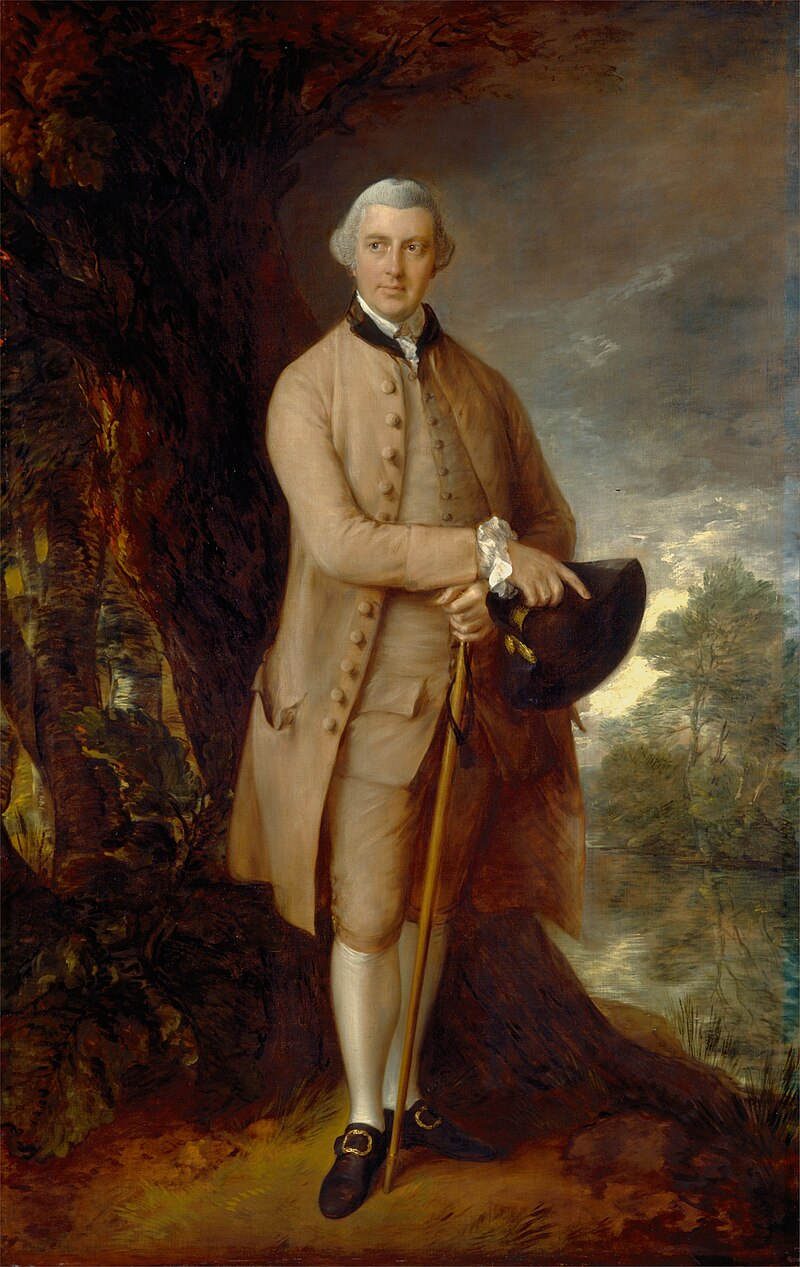
Sir William Pulteney by Thomas Gainsborough
Very unusual back in the day, William Johnstone changed his own surname to that of his heiress wife when they married, so he became William Pulteney. Once the wealthiest man in England, the family owned estates in Bathwick (just outside the city centre) across the River Avon.
But as there was no bridge, the land was of little use. So he commissioned architect Robert Adam to build the now world-famous Pulteney Bridge. Robert was a Scottish architect, the first to incorporate ‘movement’ in buildings. Also an MP, he never married, and left his estate to his two sisters.
Sir William’s daughter Henrietta died just 41 in Brighton, likely from consumption. The New York state town of Henrietta, is named after her. There is also a town of Bath, with many streets named after Pulteney (the jailhouse was near Pulteney Square).
Clifton Suspension Bridge: Bristol’s Heritage

Clifton Suspension Bridge is an important part of Bristol’s heritage, which was built around 150 years ago to cross the Avon Gorge. A proud example of design innovation, it’s now one of England’s most iconic landmarks.
Although walkers may cross the bridge for free, a toll system is used for vehicles, and monies raised can ensure regular safety inspections and maintenance.
Dogs are not permitted in the museum, so know this before travel, to avoid leaving dogs in cars.
A great example of Victorian engineering, it was designed by Isambard Kingdom Brunel (what a fancy name!) who won a competition to find the best design to build a bridge to cross the river, which split the busy maritime city of Bristol in two. He was only 24 when he won, clever boy!
This beautiful bridge was not only practical, but elegantly beautiful too, at a time when ‘bridges were just bridges’. He was a daring engineer who also designed big steamships and railways, always focusing on designs that were visually striking, as well as functional.
The bridge however was very difficult to build, mostly due to politics and economic downturns, which meant the project had to rely on public subscriptions and private funding, which was less reliable than government money.
Then there were engineering hurdles, as the Avon Gorge creates a tricky building site, due to steep cliffs and swirling winds. IN 1836, the project actually stalled completely. Sadly Brunel died in 1859, before he ever got to see the completed bridge. But other engineers updated the technology to improve the design, and it finally opened in 1864, and today remains a legacy to his talent.
What’s Special About This Bridge?
Clifton Suspension Bridge is a unique skeleton of wrought iron chains, stone towers and timber, that work together beautifully. Wrought iron bends under pressure, making it ideal for a suspension bridge, and chains support the bridge deck, which can take the force of both weather and traffic.
The bridge itself is built from local limestone, which is not just durable but blends seamlessly into the landscape. The old wooden decking has now been replaced with more modern materials, which can take higher footfall and traffic.
An Incredible Suicide Attempt Survival
Alas (just like Golden Gate Bridge), Clifton Suspension Bridge has at times been a popular spot for suicides. Such spots often use barriers and telephones to call Samaritans, for people needing help.
Many years ago, one young barmaid attempted suicide (due to a failed love affair) by jumping off Clifton Suspension Bridge. But her long billowing skirt kind of turned into a parachute, and although covered in mud, she survived.
The lady eventually found love again, married and lived to be 85. She kept the photo of two sisters who (in 1896) also survived the bridge (being thrown off it by their father, who had gone insane and was later sent to an asylum).
Tower Bridge: A Magnificent Victorian Structure
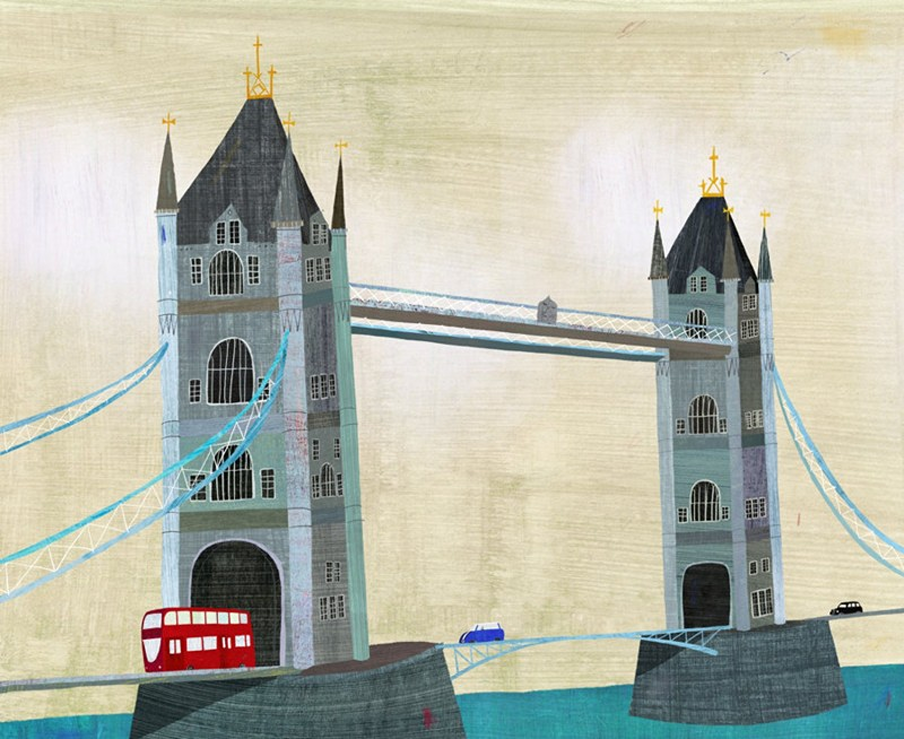
Tower Bridge is a suspension bridge built in the late 1800s, to give people better access to the East End. Often confused with London Bridge (half a mile away), the urban (denied) legend is that an American (who bought a bridge to put in Arizona) bought the wrong one!
The bridge was originally built to allow ships to pass underneath, while letting walkers and cars pass overhead. It took almost 8 years to build and almost 500 workers.
Even today the bridge still opens for ships to pass. And visitors can watch all the action through the famed thick glass floors. Braille booklets are available for blind people to also enjoy all the action.
England’s Own Version of the Film ‘Speed!
In 1952, a double-decker bus began to slide, as the bridge accidentally opened.
Driver Albert Gunter saved everyone’s lives by making a split-second decision to accelerate to clear the opening gap (a bit like in the film Speed when the road wasn’t built). There were no serious injuries and to reward his bravery, he was awarded the princely sum of £10!
Tyne Bridge: A Feat of Victorian Engineering
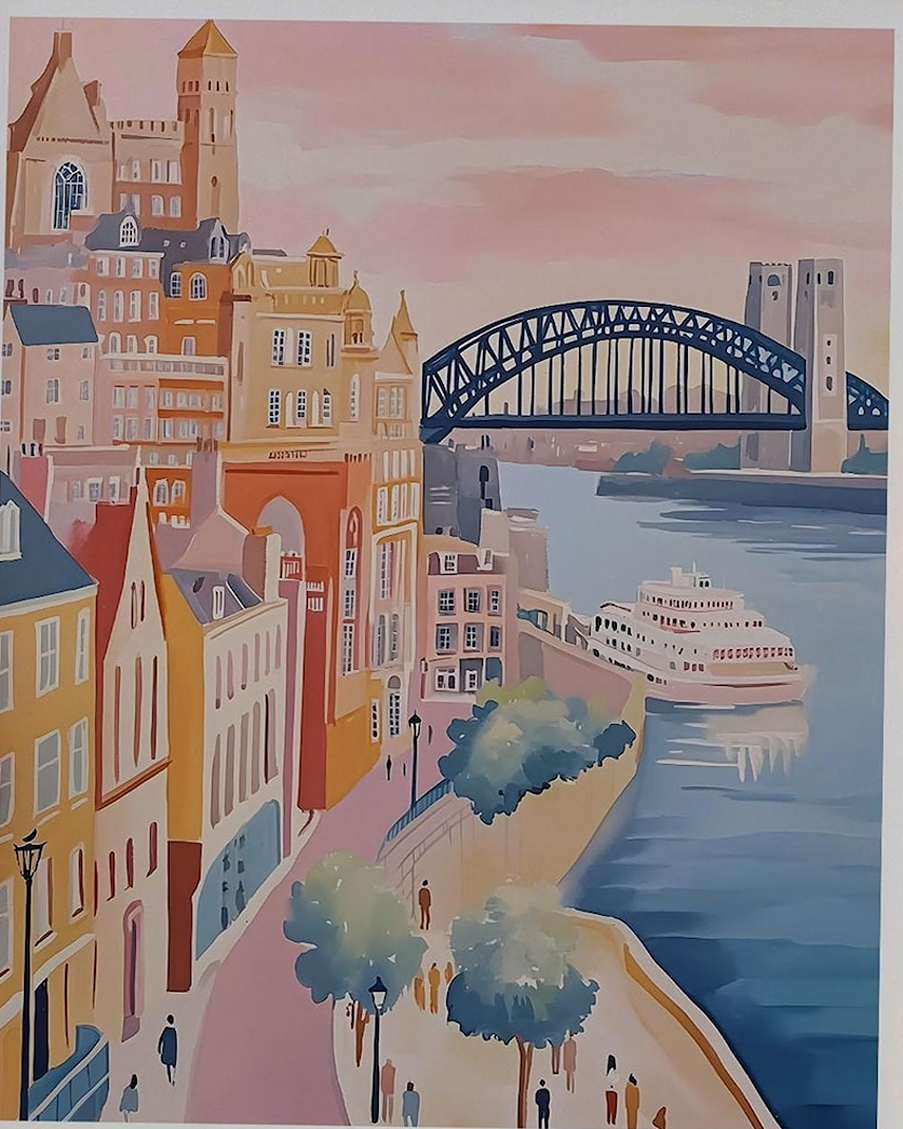
One of England’s most iconic bridges is Tyne Bridge, the one that links the city of Newcastle and the large town of Gateshead in northeast England. It’s used daily by many people, who often live in one area, and work in the other.
The bridge was opened to great fanfare in 1928, after taking three years to build (one man sadly died during construction, when fell into the river).
The arch shape looks similar to that of Australia’s Sydney Harbour Bridge. But in fact this bridge in England was built first, so it’s likely the Aussie bridge was influenced by Tyneside, not the other way around!
Another bridge that this is compared to is New York’s Hell Gate Bridge (who would name a bridge after the gates of Hell?!) Now used by Amtrak (passenger railroad services), this was built in 1917 so may have influenced English architects. Formerly the world’s longest steel bridge, it’s so strong it survived Nazi bombs. And experts say without maintenance, it could survive for 1000 years!
Providing Habitats for Coastal Kittiwakes

Made from strong steel, Tyne Bridge provides a strong backdrop for nesting kittiwakes, around 700 use it each year, hidden from view. In fact, Tyne Side now boasts the largest colonies of inland breeding kittiwakes on earth.
Local wildlife experts have been instrumental in persuading those restoring the bridge to avoid netting (that could trap nesting birds) and use alternative methods from those who know, to protect birds that have been there a lot longer than us.
Kittiwakes are a type of gull, but due to over-fishing, pollution and warming seas, their population has fallen in the UK by 60% in the last 40 years or so. This makes protecting those nesting in Tyne Side so vital.
In fact, despite being a naturally cliff-nesting bird that spends most of the time at sea, this area has become a haven for gulls that previously would have nested on shipwrecks even. Unlike most gulls, kittiwakes (who only have three toes) are not scavengers, so you won’t find them stealing your chips or on landfill sites.
Learn more on how to protect seaside homes of wild gulls.
To attract a female, male kittiwakes perform a ‘head-jerk dance!’
The Beautiful Bridges of Cambridge City
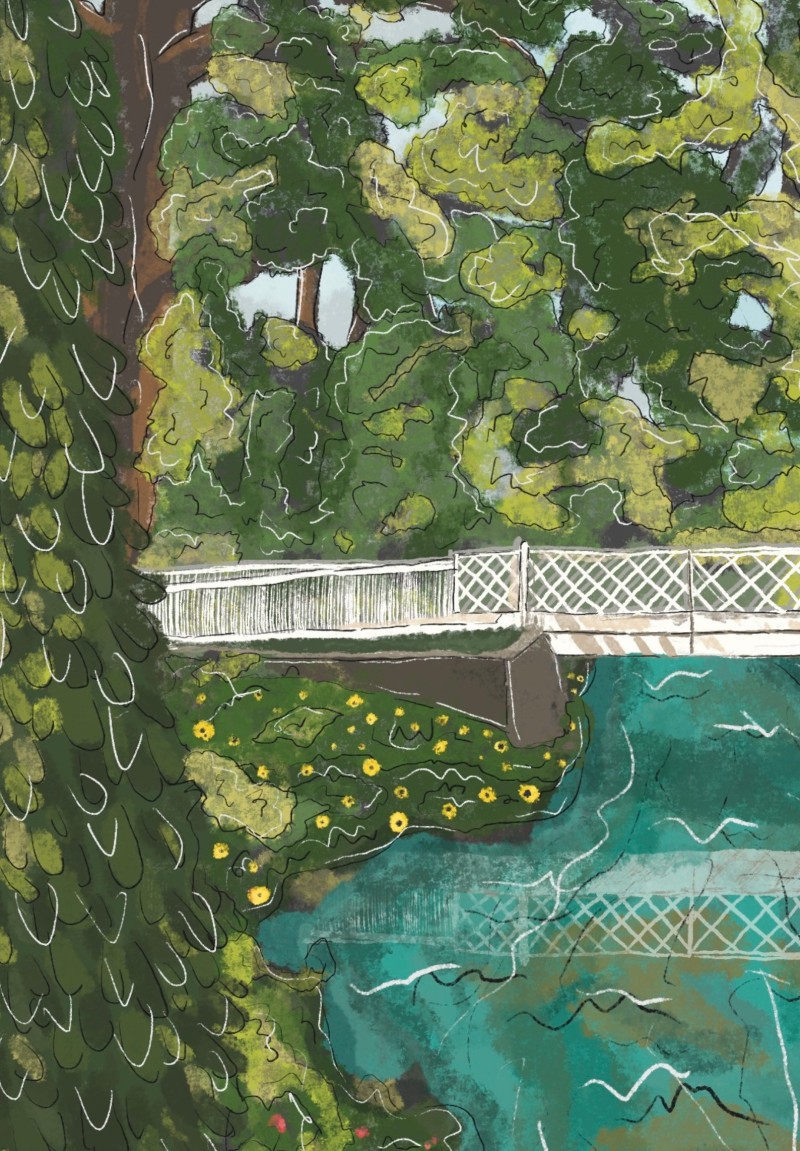
All art by Cambridge Purple
The ancient university city of Cambridge in the East Midlands, and home to some of England’s most beautiful and unique bridges. Many people walk or cycle along these bridges (half of all Cambridge residents ride a bicycle at least once a week!)
Hildersham Bridge (Cambridge Purple) sits in a nearby village. Funded by Mrs Elizabeth Goodwin Hemmington in 1886 to replace a ford (made impassable by floods), this was built on dry land, then they moved the river (?!)
Most of Cambridge’s bridges sit on the River Cam, which is over 120,000 years old, shaped into its present form by a flood 14,000 years ago. It’s home to unusual wildlife like elaborately coloured mandarin ducks and sea shags (like small green versions of cormorants).
A popular pastime on the River Cam is punting (flat-bottom boats that you steer with a pole, far less polluting than most forms of river transport). Apparently it’s quite tricky, so get lessons!
Let’s take a look at some of Cambridge’s most iconic bridges:
The Mathematical Bridge
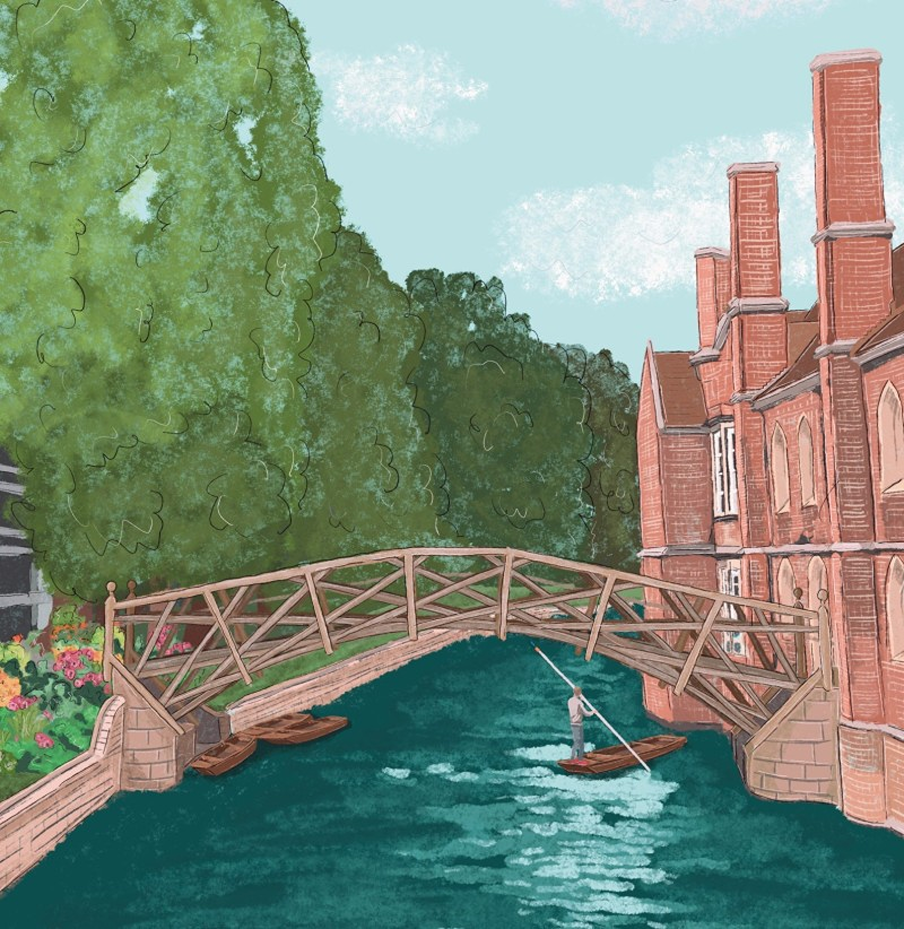
The Mathematical Bridge at Queen’s College is an amazing piece of engineering. In that although it’s curved, it’s built from straight planks of wood!
The Bridge of Sighs

The Bridge of Sighs is a covered stone bridge, known for its Victorian Gothic architecture. It’s located at St John’s College (the only one to have two bridges). Apparently it’s named after the prisoners on their way to court, who would sigh as they crossed it!
Clare Bridge is the oldest surviving bridge in Cambridge, built around 1640. It has a mystery attached, in that there is a sliced-off ball on one of the spheres. It’s now not believed that it was due to the mason being underpaid (this was an unfair myth, so it remains a mystery!)
Magdalene Bridge was built from stone in the 18th century, and was known for its May Day celebration, where crowds would gather to hear the choir sing from the tower, at sunrise. It’s the only bridge on the River Cam that allows for public transport.
King’s College Bridge was built in 1819, and was one of the last places to have legal duels!






